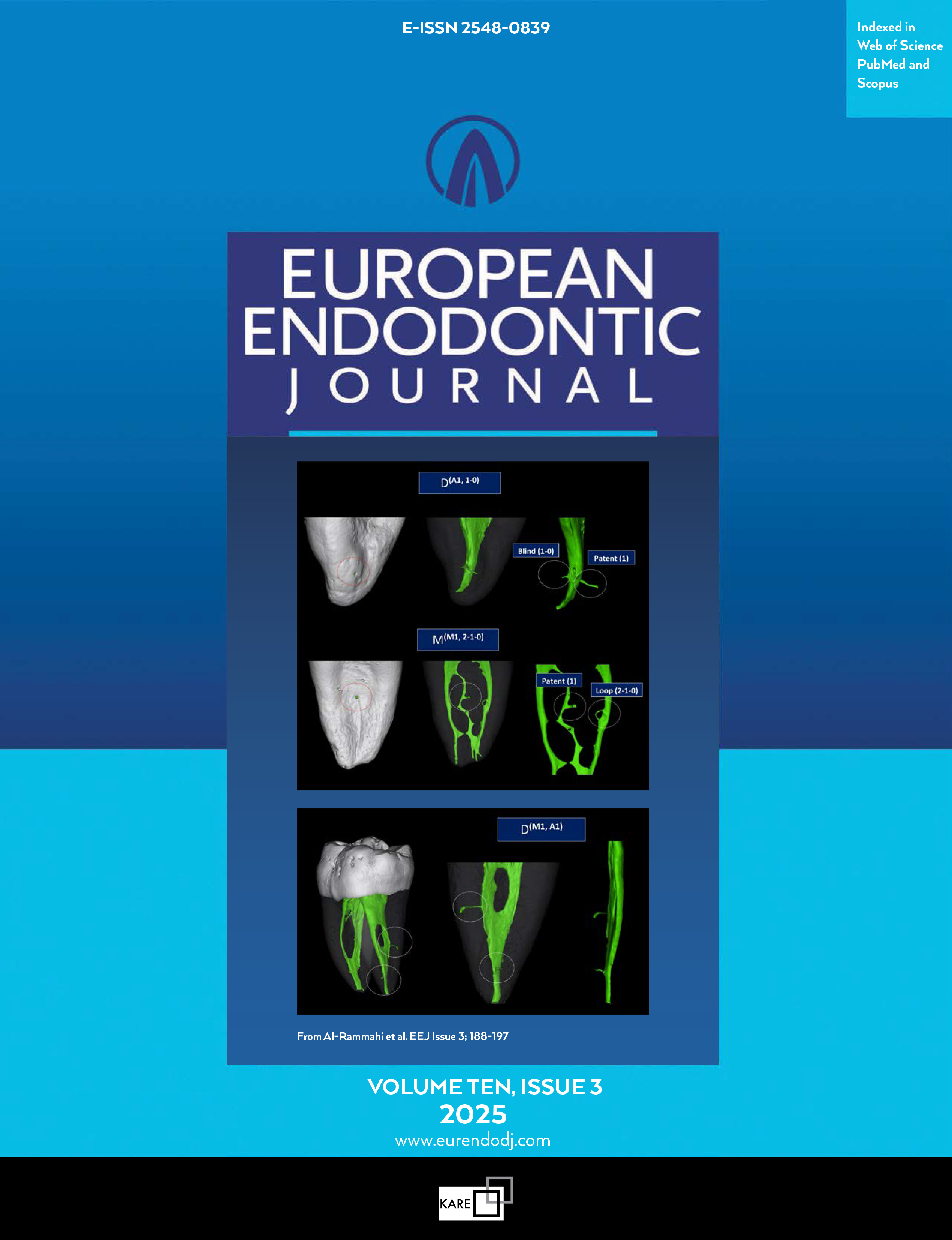Metrics
2024 IMPACT FACTOR
5 year Impact Factor
Eigenfactor Score
2024 CiteScore
Journal Citation Reports
(Clarivate 2025, JIF Rank)
Bactericidal Effect of Triple Antibiotic Paste against Enterococcus faecalis in Dentinal Tubules: An Ex Vivo Study
Athiphum Thasanakit1, Jittranan Kaewprag1, Ratchapin Srisatjaluk21Department of Operative Dentistry and Endodontics, Mahidol University Faculty of Dentistry, Bangkok, Thailand2Department of Oral Microbiology, Mahidol University Faculty of Dentistry, Bangkok, Thailand
Objective: The aim of this study was to investigate the bactericidal effect of various concentrations of triple antibiotic paste (TAP) against Enterococcus faecalis (E. faecalis) in dentinal tubules using a bacterial culture assay and confocal laser scanning microscope (CLSM).
Methods: Ninety human teeth were contaminated with E. faecalis (ATCC 29212) and randomly allocated into 5 groups; the negative control (without TAP), 1 mg/ml, 5 mg/ml, 7.5 mg/ml and 10 mg/ml TAP (n=18). After a 3-week TAP treatment, samples were collected from the root canal space, root dentin at 100-μm and 200-μm depth. The collected samples were subjected to a bacterial culture assay (n=10). Eight roots from each group underwent CLSM analysis to determine the live/dead bacterial cells.
Results: The bacterial culture assay results indicated that the negative control samples were all culturable. The number of culture-positive samples decreased after TAP treatment at 1, 5, 7.5 and 10 mg/ml, with 2, 2, 1 and 0 culturable samples, respectively. However, there was no significant difference among the TAP treatments. Surprisingly, the CLSM analysis demonstrated live bacteria in the dentinal tubules in all samples. The negative control had 52.36%±3.24 live bacteria. TAP treatment at 10 mg/ml had the lowest percentage of live bacterial cells (40.58%±5.40), followed by 7.5 mg/ml (44.14%±6.03), 5 mg/ml (46.31%±5.32) and 1 mg/ml (52.55%±8.82). The percentage of live cells in the 10 mg/ml, 7.5 mg/ml and 5 mg/ml TAP groups were significantly lower than the 1 mg/ml TAP and negative control groups.
Conclusion: TAP treatment significantly decreased the percentage of viable E. faecalis cells in the dentinal tubules and its bactericidal effect was dose-dependent. (EEJ-2023-05-068)
Manuscript Language: English
(599 downloaded)


